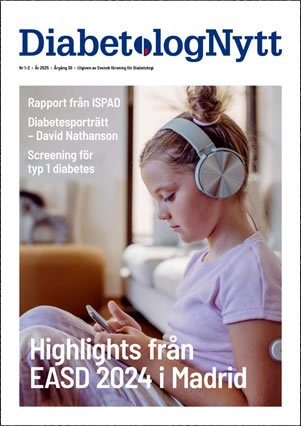Vid öppen revaskularisering används antingen ett av patientens egna kärl för att koppla förbi en förträngning eller så sätts en kärlprotes in för samma ändamål.
Data samlades in från Svenska kärlregistret och Nationella diabetesregistret mellan åren 2010 och 2014.
Utav 1 537 patienter som registrerats i Svenska kärlregistret hade 569 personer även diabetes. Uppföljningen skedde ungefär 4,5 år i median efter den öppna kärlkirurgin.
Vid den tiden sågs ingen skillnad mellan patienter med och utan diabetes för bland annat dödlighet, kardiovaskulär död eller antalet större amputationer. Det sistnämnda handlar om amputationer av benet eller underbenet.
E. Lilja1, A. Gottsäter1, M. Miftaraj2, J. Ekelund2, B. Eliasson3, A.-M. Svensson2, M. Zarrouk1, S. Acosta1;
1Department of Clinical Sciences, Lund University, Malmö, 2National Diabetes Register, Centre of Registers, Gothenburg, 3Department of Molecular and Clinical Medicine, Institute of Medicine, University of Gothenburg, Gothenburg, Sweden.
Background and aims The risk of major amputation is higher after urgently planned endovascular therapy for chronic limb-threatening ischemia (CLTI) in patients with diabetes mellitus (DM). The aim of this nationwide cohort study was to compare outcomes between patients with and without DM following urgently planned open revascularization for CLTI from 2010 to 2014.
Materials and methods
Out of 1537 individuals registered in the Swedish Vascular Registry, 569 were registered in the National Diabetes Register. A propensity score adjusted Cox regression analysis was conducted to compare outcome between the groups with and without DM. Median follow-up was 4.3 years and 4.5 years for patients with and without DM, respectively.
Results
Patients with DM more often had foot ulcers (p=0.034) and had undergone more previous amputations (p=0.001) at baseline. No differences in mortality, cardiovascular death, major adverse cardiovascular events (MACE), or major amputation were observed between groups. The incidence rate of stroke was 70% higher (95% CI 1.11-2.59; p= 0.0137) and the incidence rate of AMI 39% higher (95% CI 1.00-1.92; p=0.0472) among patients with DM in comparison to those without.
Conclusion
Open vascular surgery remains a first-line option for a substantial part of patients with CLTI, especially for limb salvage in patients with DM. The higher incidence rate of stroke and AMI among patients with DM following open vascular surgery for infrainguinal CLTI require specific consideration preoperatively with the aim of optimizing medical treatment to improve cardiovascular outcome postoperatively.
Nyhetsinfo
www red DiabetologNytt


